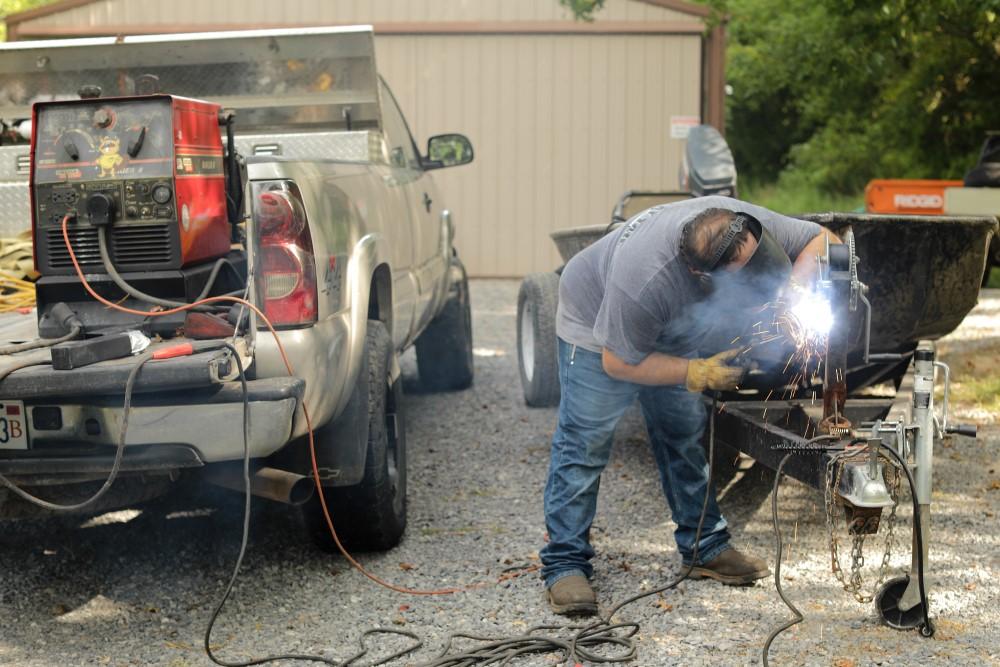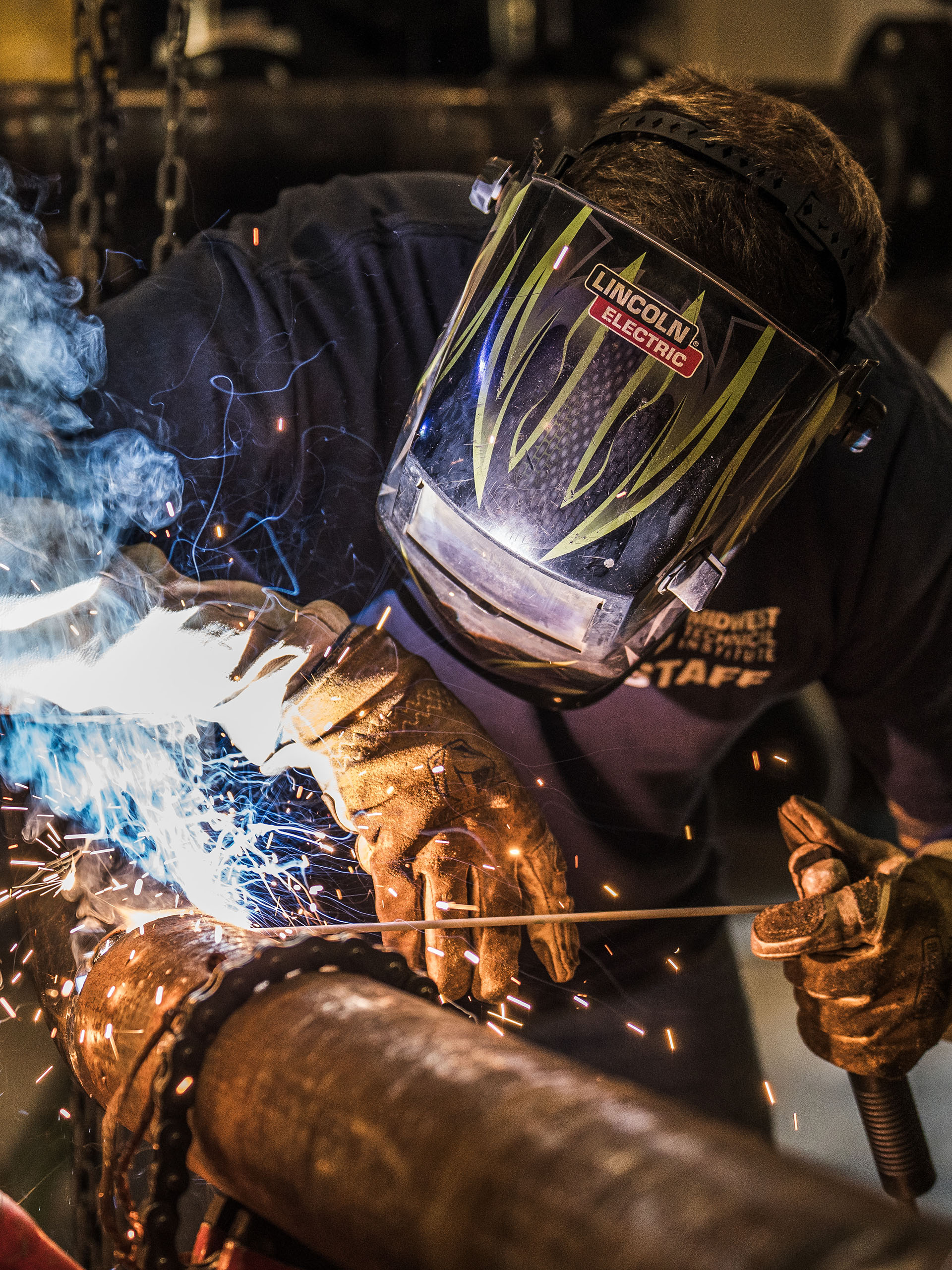Common Welding Fixing Issues and Exactly How to Address Them Efficiently
Welding fixings usually encounter a series of concerns that can jeopardize the stability of the last product. Typical issues include inadequate penetration, porosity, and imbalance, to name a few. Each problem provides one-of-a-kind challenges that need particular methods for resolution. Comprehending these concerns is essential for welders aiming to enhance their outcomes and skills. This discussion will certainly check out these typical welding fixing concerns and efficient methods to address them.
Inadequate Penetration
Insufficient penetration takes place when the weld steel fails to completely fuse with the base product, resulting in weak joints and potential architectural failings. This concern commonly originates from insufficient warmth input, incorrect electrode angle, or incorrect welding speed. Welders may come across insufficient penetration as a result of a miscalculation of the needed criteria for a specific product thickness or kind. In addition, contamination on the base material's surface can impede effective bonding, intensifying the issue. To resolve insufficient penetration, welders need to guarantee ideal setups on their tools and maintain a tidy work surface. Regular inspection of welds is recommended to determine any deficiencies early, enabling timely improvements and the prevention of endangered architectural honesty in welded settings up.
Porosity
Porosity is an usual issue in welded joints that materializes as small gas bubbles trapped within the weld metal. This issue can compromise the honesty of the weld, leading to minimized toughness and possible failing under tension. Welding. Porosity generally develops from contamination, dampness, or incorrect welding strategies, which permit gases to run away into the liquified weld pool. To attend to porosity, welders need to guarantee appropriate surface area preparation, keep a clean workplace, and use appropriate welding criteria. Furthermore, selecting the appropriate filler material and securing gas can reduce gas entrapment. Normal examination and screening of welds can aid determine porosity early, guaranteeing prompt corrective actions are taken, thus protecting the high quality and integrity of the bonded structure
Imbalance
Misalignment in welding can emerge from numerous aspects, consisting of inappropriate configuration and thermal expansion. Comprehending the origin is important for reliable resolution. Several improvement strategies are readily available to straighten elements and assure structural stability.
Causes of Misalignment
Welding imbalance often originates from a selection of underlying concerns that can jeopardize architectural integrity. One primary cause is improper fit-up of components prior to welding, which can cause voids and uneven surface areas. Variants in thermal growth during the welding process can likewise cause distortion, particularly if the materials being joined have various coefficients of expansion. Furthermore, poor securing and fixturing may fall short to hold elements firmly in area, leading to activity throughout welding. Improperly maintained devices, including welding equipments and tools, may introduce disparities in the weld grain, further contributing to imbalance. Lastly, operator mistake, stemming from not enough training or experience, can additionally play a substantial role in creating misaligned welds.
Correction Techniques Available
Attending to imbalance successfully requires a mix of restorative strategies tailored to the details problems at hand. One usual approach is the usage of fixtures or jigs to hold parts in the correct setting during welding, making certain consistent alignment. Additionally, preheating the products can help in reducing distortion and enhance fit-up. For significant imbalance, mechanical adjustment techniques, such as using hydraulic jacks or clamps, can be utilized to remedy the placement prior to welding. Post-weld warm treatment may additionally be needed to relieve anxieties brought on by imbalance. Ultimately, careful evaluation and adjustment throughout the setup phase can avoid misalignment issues from becoming considerable issues, promoting a smoother welding process and improving overall architectural honesty.
Distortion
Distortion is an usual obstacle in welding that can develop from various aspects, including unequal home heating and air conditioning. Understanding the sources of distortion is essential for executing efficient avoidance methods. Resolving this issue not just boosts structural stability but also boosts the overall top quality of the weld.
Root causes of Distortion
When subjected to the intense warmth of welding, materials typically undergo modifications that can cause distortion. This phenomenon mainly occurs from thermal development and contraction during the welding process. heliarc As the weld area heats up, the product expands; upon cooling, it acquires, which can produce inner stress and anxieties. On top of that, irregular heating throughout a work surface can aggravate these stress and anxieties, resulting in bending or flexing. The sort of product likewise plays a substantial duty; metals with differing thermal conductivity and coefficients of expansion might react in a different way, causing unpredictable distortions. Additionally, bad joint style and inadequate fixturing can add to imbalance throughout welding, boosting the likelihood of distortion. Comprehending these causes is essential for reliable welding repair service and avoidance methods.
Avoidance Techniques
Effective prevention techniques for distortion during welding emphasis on managing warm input and making sure correct joint style. Maintaining a regular warm input assists to reduce thermal development and contraction, which can bring about distortion. Using techniques such as pre-heating the workpiece can also decrease the temperature level slope, promoting uniform heating. Additionally, choosing proper joint layouts, such as T-joints or lap joints, can improve stability and lower anxiety focus. Applying appropriate fixturing to secure the workpieces in position even more aids in maintaining positioning throughout the welding process. Staggered welding series can distribute heat much more evenly, avoiding local distortion. By applying these techniques, welders can considerably decrease the possibility of distortion and improve the overall high quality of their welds.
Fracturing
Splitting is a common issue come across in welding repair services, usually resulting from various factors such as improper cooling prices, material option, or inadequate joint preparation. The occurrence of splits can considerably endanger the integrity of the weld, resulting in prospective failings during procedure. To resolve this concern, welders have to first evaluate the source, making sure that materials work and properly chosen for the details application. Furthermore, managing the cooling rate during the welding process is vital; fast cooling can cause tension and lead to splitting. Correct joint layout and prep work likewise contribute to reducing the risk. Applying these techniques can improve weld quality and sturdiness, ultimately lowering the likelihood of fracturing in finished weldments.

Incomplete Fusion
A substantial problem in welding repairs is insufficient blend, which takes place when the weld steel does not appropriately bond with stick welding stainless steel the base product or previous weld passes - Montana Mobile Welding and Repair Belgrade. This defect can result in weaknesses in the joint, possibly jeopardizing the integrity of the welded framework. Aspects adding to insufficient combination consist of inadequate heat input, incorrect welding technique, and contamination of the surfaces being signed up with. To address this issue effectively, welders need to ensure correct pre-weld cleaning and surface prep work, along with change their welding specifications to attain adequate penetration and fusion. Routine inspection throughout the welding process can additionally help recognize insufficient fusion early, enabling for prompt corrective steps to boost the overall quality of the weld
Overheating
While welding fixings can boost architectural integrity, overheating provides a considerable obstacle that can cause material deterioration. Too much warm during welding can alter the mechanical residential or commercial properties of metals, leading to lowered toughness, raised brittleness, and bending. This phenomenon is particularly essential in high-stress applications where architectural reliability is critical. Recognizing overheating can involve aesthetic inspections for staining or distortion, as well as checking temperature level throughout the welding procedure. To mitigate the risks connected with overheating, welders should utilize proper strategies, such as regulating warmth input, readjusting traveling rate, and making use of suitable filler products. Furthermore, implementing pre- and post-weld heat therapies can Bonuses aid recover material buildings and improve the total quality of the repair work, making certain lasting efficiency and safety.
Frequently Asked Inquiries
What Are the Usual Indicators of a Welding Issue?

How Can I Examine My Welds for Top quality?
To evaluate welds for high quality, one can make use of aesthetic evaluations, ultrasonic testing, and radiographic techniques. Each method ensures architectural honesty, identifies flaws, and verifies adherence to specified standards, inevitably boosting the integrity of the welded joints.
What Safety and security Precautions Should I Take While Welding?
When welding, one must focus on security by putting on appropriate individual protective tools, making certain proper ventilation, safeguarding combustible products away, preserving a tidy work area, and being conscious of environments to stop accidents and injuries.
Can I Repair a Weld Without Renovating the Entire Joint?
Fixing a weld without renovating the whole joint is feasible, depending upon the damage (Montana Mobile Welding and Repair Fabrication). Strategies such as grinding, including filler product, or making use of a welding procedure can effectively attend to specific problems while protecting the bordering framework
What Tools Are Important for Effective Welding Repairs?
Crucial tools for reliable welding repair services consist of a welding equipment, cord brush, grinder, protective equipment, clamps, and filler materials. Each device plays a vital function in ensuring high quality and security during the fixing procedure. Porosity normally occurs from contamination, dampness, or improper welding techniques, which permit gases to leave right into the molten weld swimming pool. Improperly conserved tools, including welding equipments and devices, may introduce incongruities in the weld bead, additional adding to imbalance. When subjected to the extreme warm of welding, materials commonly go through adjustments that can lead to distortion. Breaking is a typical problem encountered in welding repair services, frequently resulting from different variables such as improper cooling rates, product choice, or poor joint preparation. A considerable issue in welding repair services is insufficient blend, which takes place when the weld steel does not effectively bond with the base product or previous weld passes.